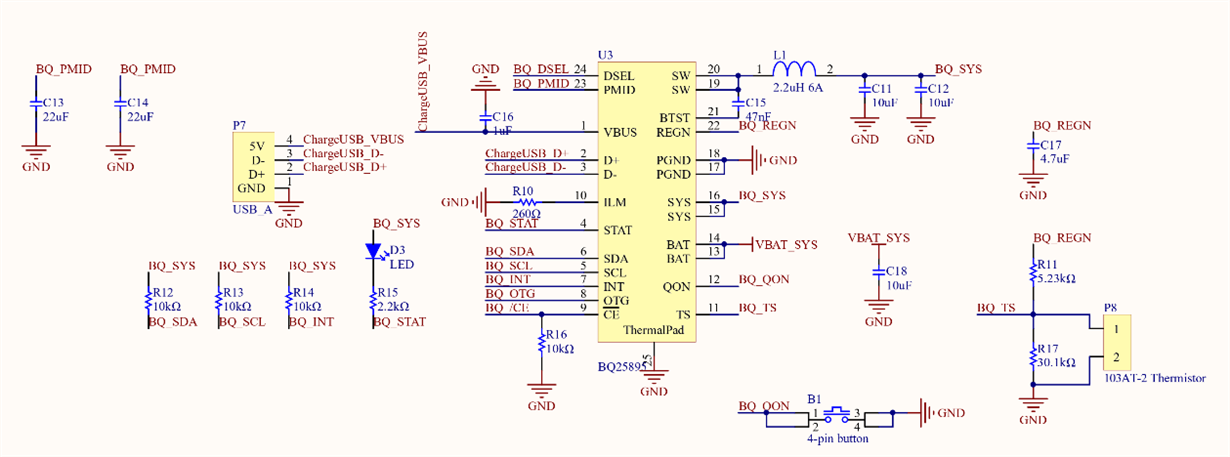I have made a custom board with BQ25895 on it, but I encounter a charging problem with my board.
If I connect the charging port (VBUS D- D+ and GND) to an adapter with rating 5V 2A, it works okay(it draws 5V 0.45A, I expect it to draw around 2A)
However if I connect it to an adapter that support quick charge, although I can see 12V on the adapter, it automatically disable the BATFET hence there is no current drawn towards the battery.
The load on SYS is only an microcontroller which should not draw more than 30mA. The load on PMID is only a red LED with 2.2kOhm resistor in series.
Any clue would be appreciated!
Here is the registers value when it is not charging:
0x00: 0x3F
0x01: 0x05
0x02: 0x3D
0x03: 0x3A
0x04: 0x20
0x05: 0x13
0x06: 0x5E
0x07: 0x9D
0x08: 0x03
0x09: 0x44
0x0A: 0x93
0x0B: 0xE2
0x0C: 0x80
0x0D: 0x13
0x0E: 0x00
0x0F: 0x00
0x10: 0x00
0x11: 0x00
0x12: 0x00
0x13: 0x3F
0x14: 0x39
Here is the register value when connected to adapter 5V 2A:
0x00: 0x48
0x01: 0x05
0x02: 0x3D
0x03: 0x3A
0x04: 0x20
0x05: 0x13
0x06: 0x5E
0x07: 0x9D
0x08: 0x03
0x09: 0x44
0x0A: 0x93
0x0B: 0x36
0x0C: 0x80
0x0D: 0x0F
0x0E: 0x00
0x0F: 0x00
0x10: 0x00
0x11: 0x94
0x12: 0x00
0x13: 0x48
0x14: 0x39
Here is the register value when connected to adapter that support quick charge:
0x00: 0x1C
0x01: 0x05
0x02: 0x3D
0x03: 0x3A
0x04: 0x20
0x05: 0x13
0x06: 0x5E
0x07: 0x9D
0x08: 0x03
0x09: 0x64
0x0A: 0x93
0x0B: 0x86
0x0C: 0x00
0x0D: 0x54
0x0E: 0x00
0x0F: 0x00
0x10: 0x00
0x11: 0xDE
0x12: 0x00
0x13: 0x08
0x14: 0x39
Update: I tried to change the 0x00 register with 0x25, I sometimes get 5V 0.6A, sometimes I get 5V 0.3A
Here is the register value:
0x00: 0x27
0x01: 0x05
0x02: 0x3D
0x03: 0x3A
0x04: 0x20
0x05: 0x13
0x06: 0x5E
0x07: 0x9D
0x08: 0x03
0x09: 0x44
0x0A: 0x93
0x0B: 0x76
0x0C: 0x00
0x0D: 0x12
0x0E: 0x00
0x0F: 0x00
0x10: 0x00
0x11: 0x97
0x12: 0x00
0x13: 0x48
0x14: 0x79
How can I get the maximum current out from the adapter (i.e. 5V 2A)?


